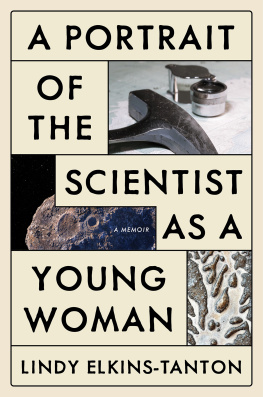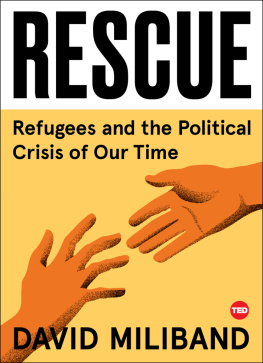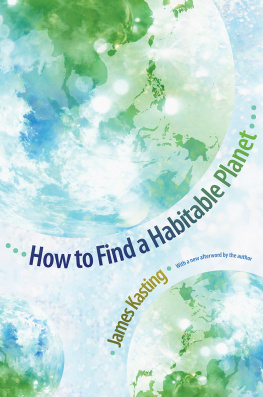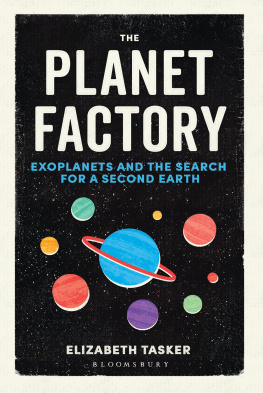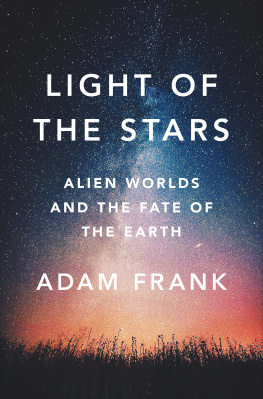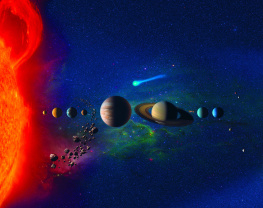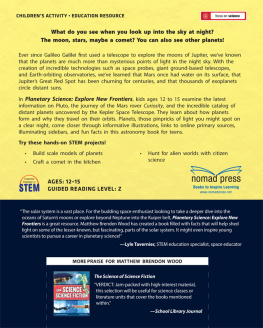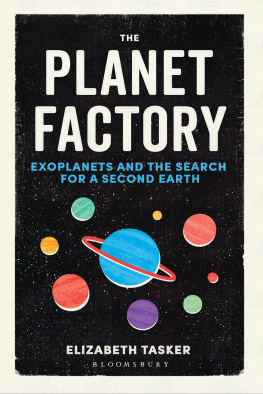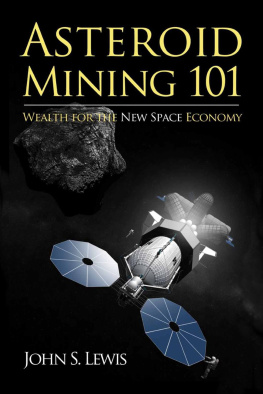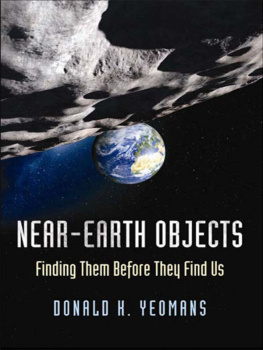Contents
Guide
Prologue
Creating a Mission to Space
What happens if it blows up? a high school student recently asked me. Do you get a do-over?
Ah, no. There are no $800 million space mission do-overs in my world. At the moment of an explosion, we are finished.
In August 2022, if luck, sweat, and the fates align, our rocket will launch our spacecraft off the Earth and begin its 3.4-year journey to the asteroid (16) Psyche. Each asteroid is assigned a number at the time of its discovery, and Psyche was the sixteenth that we human beings have discovered, of the perhaps 1,500,000 asteroids in the asteroid belt. There are not many kinds of solar system objects left to be explored, and Psyche is one of them. We think that it is made mainly of metal. We thinkthough we dont know for surethat Psyche may be a piece of one of the first metal cores to form in our solar system. This is why we are going. The molten metal in a very early, hot little planet, called a planetesimal, would have sunk to the interior and formed its core. Then, this planetesimal was broken into pieces rather than incorporated into the Earth or the other big planets of today. Psyche may be part of that exposed core.
Humans have gone to the Moon, and weve sent robotic spacecraft to investigate other rocky planets (Mercury, Venus, Mars), gas and ice giant planets (Jupiter, Saturn, Uranus, Neptune), and icy asteroids and moons (Ceres, Enceladus, Europa, and a couple of comets), but there is one category of solar system object that we have never investigated: the small category of asteroids that we think may be made primarily of metal.
Earths core and the cores of the other rocky planets are metal. Earths core is also the source of our magnetic field, the field that may help protect our atmosphere and keep our planet habitable. Metal is clearly a fundamental building block of our habitable planet. But we will never see our own core. To see a metallic world, we think we need to go to Psyche. We wont know with certainty until we get there whether Psyche is a part of a planetesimal core, but Psyche is the only large asteroid in our solar system that is likely to be metallic.
Our solar system started as a vast sparse cloud of dust and gas that was hit with a shockwave, probably the shockwave of a nearby star exploding into a supernova. That supernova was the trigger for our birth. The shockwave compressed the cloud and part of the cloud began to collapse under its own gravity, spinning, forming disks with concentrations of dust and gas in their centers, growing to become young stars. In the spinning disk of plasma, dust, and gas around the nascent star, the first solids formed, little pebbles of minerals rich in calcium, aluminum, and titanium, the elements that condense to solids at the highest temperatures as the hot disk is cooling down from being plasma or molten. These so-called calcium-aluminum inclusions are found inside meteorites that fall to Earth today, tiny survivors of the rapid, violent process of material being crushed into bigger and bigger clumps by pressure and shockwaves in the spinning disk, and the clumps, some as big as continents, colliding and sticking together to form planets.
Those little calcium-aluminum inclusion pebbles formed 4,568 million years ago, and they mark what some call the beginning of our solar system, long before the Earth had formed. If we imagine our 4,568-million-year-old solar system as a 24-hour day, within the first 20 seconds of that 24-hour solar systemabout a million years after those first pebbles formedrock and metal had already collected together into planetesimals, just tens to hundreds of kilometers in diameter. These are the continent-size clumps.
One of these planetesimals, we think, was the parent body of the asteroid Psyche. We believe that Psyche, now an asteroid orbiting between Mars and Jupiter, is the remnant of a battered planetesimal. But just as the length of time between ourselves and the original planetesimals makes seeing that early population of clumps impossible, the distance between Earth and Psyche makes little Psyche, just 138 miles in diameter (the width of Massachusetts without Cape Cod, or the northsouth height of Switzerland), too small to see clearly from Earth. The difference is that while we cant go back in time, we can bridge that gulf of space. We can send a robot to find out what Psyche really is.
On that day in summer 2022, the efforts of 800 people, 11 years, 2,000 pages of proposals, perfect wires and perfect software and perfect solar panels and bolts and joints and struts, will be perched on the top of about 20,000 kilograms of explosive propellant, and our spacecraft will be sent off into the void. We think it will all work. We are doing everything in our power to make sure it will. We hope it will work.
But, it might fail.
Space is hard.
There arent many people who have led deep space missions and each of us followed our own path. Indeed, there may be no one single way a person gets to lead a space mission. But if there are a series of paths that have worked in the past, I can say with some certainty that I did not follow any of them.
Chapter 1
All I Had Were Questions
The clearest image in my mind is the clump of young poplars at the foot of my parents driveway, an unpruned, un-thinned clump that concealed a deep opening to the culvert that ran under the end of the drive. Their young spring leaves glittered and clattered in the sun and wind that afternoon as I walked up the road.
It was 1982, and physicist and Nobel Prize winner Professor Hans Bethe had visited my school, Ithaca High, earlier that day and given a lecture about the nuclear arms race and the notion of mutual assured destruction between the U.S. and the U.S.S.R. That dull sidewalk, the colorful cars, and the unruly clump of poplars with shining leaves waving in the wind: Suddenly they were no longer perpetual. They could be annihilated in a firestorm in a second and we would not even have a warning. What could it mean to live in a world so fragile? The fear I already had within me had just discovered a cause, and it leapt up and darkened my joy and my future and took on the name nuclear war.
Up until that day, I was an earnest, proto-intellectual teenager without a clear idea where I wanted to go next. I was a decent flute player, and I thought about attending a conservatory, but I knew I would never have the talent to be a soloist or first flute in a good orchestra. I was interested in literature and writing and art and art history but I felt those were more my brothers and my fathers areas. I was on the fringes of a small group of high school scholars and activists named The Young Plumbers. We wrote a high-quality, regular newsletter of politics and criticism, some aimed at the school board, some at national and international current events. We took advanced placement classes together, notably our English class. In that class we mainly discussed sex and politics. We read Jude the Obscure and Shakespeare. One day we were asked to recite a poem of our choice. I was excited: I really did have a favorite poet, Czesaw Miosz. I prepared and memorized my favorite poem, Study of Loneliness, which ends:
If I am all mankind, are they themselves without me?
And he knew there was no use crying out, for none of them would save him.
My recitation was met with some silence, and then a cutting remark from the teacher made it clear I was being a show-off. Her comment instantly washed away my pleasure and comfort in the moment with a freezing sense of shame. Obviously, I immediately realized, it would have been way cooler to recite Jabberwocky. I sat down.
Despite my friendships and activities, moments like this gave me the uneasy feeling that I did not understand how others perceived me, and therefore, that I was not the master of how my actions and intentions were received.

